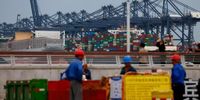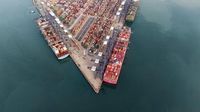China’s export engine, long a pillar of its economic might, sputtered in August 2025 as growth in shipments abroad slowed to its weakest pace in six months. According to data released on September 8 by the General Administration of Customs and reported by multiple outlets including Reuters, Bloomberg, and The Economic Times, outbound shipments rose 4.4% year-on-year to $322 billion. That figure missed both the 5% increase forecast in a Reuters poll and the 5.5% median estimate in a Bloomberg survey, and was a marked slowdown from July’s better-than-expected 7.2% gain.
Imports, meanwhile, grew just 1.3%—again, below economists’ predictions of a 3% rise and well off July’s 4.1% growth. The result was a trade surplus of $102.3 billion in August, up from $98.24 billion in July but still lagging behind June’s $114.7 billion. Even so, China remains poised to smash last year’s record, with its trade surplus expected to top $1.2 trillion by year’s end, according to Bloomberg.
But the headline numbers mask a dramatic shift in China’s trading landscape. Exports to the United States—once the country’s single largest customer—plunged 33% in August, marking the fifth consecutive month of double-digit declines. Imports from the U.S. also tumbled 16% year-on-year. The cause? A potent mix of U.S. President Donald Trump’s aggressive trade policies, including steep tariffs and a crackdown on so-called transshipments, and the fading impact of last year’s rush to beat tariff deadlines.
“With the temporary boost from the U.S.-China trade truce fading and the U.S. raising tariffs on shipments rerouted via other countries, exports are likely to come under pressure in the near term,” said Zichun Huang, China economist at Capital Economics, in a note cited by CNBC. The truce, extended for another 90 days on August 11, locked in U.S. levies of 30% on Chinese imports and 10% Chinese duties on U.S. goods, but talks for a broader deal have stalled. Trump’s July threat of a 40% penalty tariff on goods transshipped through third countries has further complicated matters for Chinese exporters looking to sidestep earlier levies.
Despite these headwinds, China’s exporters have shown remarkable resilience by pivoting to alternative markets. Shipments to the 10-nation Southeast Asian bloc soared nearly 23% in August, while sales to the European Union climbed 10% and those to Africa surged 26%. Exports to Latin America also posted solid gains. “Chinese exporters have been pushing for higher market share in other countries due to weak domestic demand in China. This ‘going abroad’ initiative likely contributed to the resilience of Chinese exports so far this year,” said Zhiwei Zhang, president and chief economist at Pinpoint Asset Management, as reported by CNBC.
Still, no other market comes close to matching U.S. consumption power. As of August, the U.S. had absorbed $283 billion in Chinese goods for the year, while the EU bloc took in $541 billion. The loss of U.S. demand has left many Chinese producers scrambling to fill order books elsewhere, with one exporter describing the scene as a “mad rat race,” according to The Economic Times. The intense competition, coupled with falling prices, has put many firms in the red despite rising export revenue. Industrial profits were down almost 2% year-on-year through July, and a gauge of new export orders sat at a multi-month low in August, Bloomberg reported.
China’s export mix is also evolving. Exports of rare earths—a key strategic resource—increased 22.6% in August to 5,791.8 metric tons, customs data showed. Meanwhile, soybean imports hit their highest-ever level for the month, as buyers snapped up supplies from South America and continued to shun American beans. Iron ore imports remained elevated as mills geared up for the September construction season, but a protracted property slump and sluggish consumer spending have weighed heavily on domestic demand.
Beijing’s response has been measured. Policymakers have opted against rushing out large-scale fiscal stimulus in the face of external pressure, instead exercising tighter control over flagship programs like ‘cash-for-clunkers’ and letting local governments exhaust their allocations before considering new funds. “The prospect of a fiscal stimulus is definitely quite dim. China still has a number of economic tools such as policy bank credit and monetary easing, which may be enough to help it reach 5% [annual growth],” said Xu Tianchen, senior economist at the Economist Intelligence Unit, as quoted by Reuters.
There are, however, growing expectations that the People’s Bank of China will cut its policy rate by 10 to 20 basis points in the coming week, as Beijing prepares to release a raft of economic data on retail sales, industrial output, investment, and employment. “With those numbers expected to again show signs of subdued growth, Beijing can use a rate cut to counter pessimism and pacify those expecting bad news to trigger good news,” said Neo Wang, lead China strategist at Evercore ISI, according to CNBC.
Deflationary pressures also loom. Goldman Sachs forecasts that wholesale price inflation will remain “deeply negative,” with the producer price index falling 2.9% year-on-year in August. Consumer inflation is expected to remain “moderately negative,” with the headline CPI dropping 0.2% from a year earlier. The government’s so-called “anti-involution” policies, aimed at curbing excessive price-cutting, and recent upticks in upstream raw material prices could provide some relief, but the outlook remains uncertain.
Trade tensions with the U.S. show no sign of abating. Trump has threatened a 200% tariff on Chinese goods if Beijing fails to deliver on promises to increase rare-earth magnet exports—a move that could further upend global supply chains. Meanwhile, American exporters are at risk of missing out on billions of dollars in sales as Chinese buyers turn elsewhere for key commodities.
For now, China’s exporters are holding up better than many expected, thanks in large part to their ability to diversify. “Shipments to the U.S. are down, but other routes are even better than last year. Lots of exports are also tied to Chinese factories going overseas and importing raw materials and other inputs from China,” explained Dan Wang, director for China at Eurasia Group, as reported by Reuters. But with industrial profits under pressure, domestic demand still tepid, and trade talks with Washington in limbo, the road ahead looks anything but smooth for the world’s second-largest economy.
As the numbers tell the story, China’s export machine is adapting under duress, but the global trade landscape—buffeted by tariffs, shifting alliances, and economic uncertainty—remains as unpredictable as ever.






